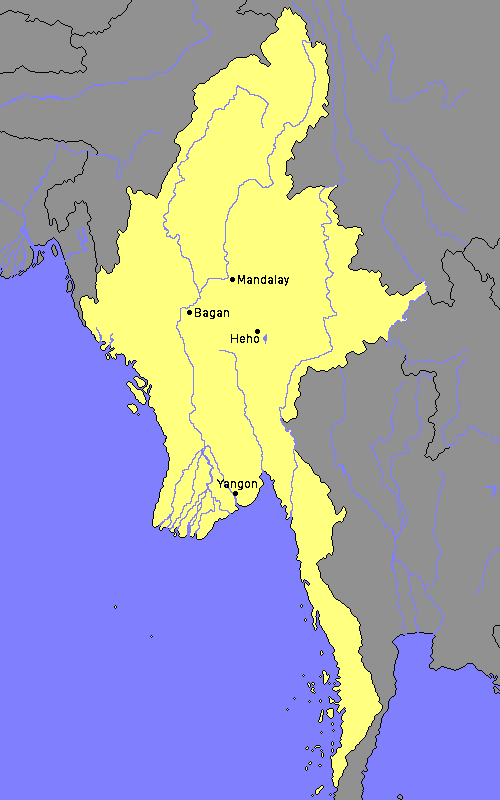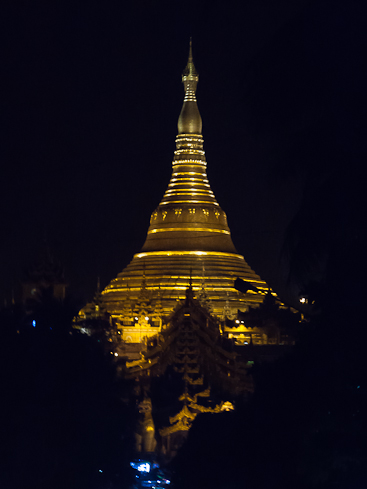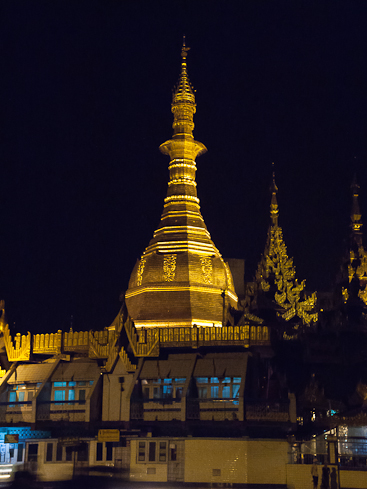Myanmar: Also known as Burma, Myanmar is located in Southeast Asia on the Indo-Chinese Peninsula, just south of China. The earliest discovered settlements in modern-day Myanmar date back to 11,000 BC, but the region was not unified until 1057, under the Pagan Kingdom. During their reign, the kingdom expanded from the Irrawaddy river basin northward, spreading Burmese ethnicity, language and culture. Theravada Buddhism become the predominant religion during this time, and still is today. However, the kingdom collapsed due to the Mongol invasion of 1287, after which the region was split into many, smaller kingdoms. They were reunified as a single kingdom under the Taungoo starting in 1531, and eventually encompassed the kingdoms of Ayutthaya (Thailand) and Lan Xang (northern Laos). Then the largest kingdom in the history of Southeast Asia, their reign slowly eroded following rebellions throughout the kingdom, some with Portuguese or French help, and finally collapsed in 1752. Thereafter, the kingdom was again reunited, this time by the Konbaung Dynasty, which set its sights on expanding its territory into Siam and India. At this time, the British ruled India, and thus began the first of three Anglo-Burmese wars, of which the British won all three, gradually conquering all of Burma over a 62 year period.

The British ruled over the country until World War II. With the help of the Japanese, the Burmese forced the British out of most of Burma. Burma was now ruled by a Burmese civilian administration, yet it was still subordinate to a Japanese military administration. By 1945 the British had retaken the country from the Japanese, and a transitional government of Burmese rulers led the country. In 1948 the nation became an independent democratic republic, the Union of Burma. Then, in 1962, a military coup d'état overthrew the democratic government and nationalized nearly every company. The top leaders resigned from the military and continued to rule the country in a one-party system, violently supressing all protests. In 1988, massive pro-democracy demonstrations swept across the country and the government was again overthrown in a military coup. The new leaders changed the name of the country to the Republic of the Union of Myanmar and held free elections in 1990. The party of Aung San Suu Kyi won, but the ruling military junta invalidated the elections, refusing to give up power. Aung San Suu Kyi had been placed under arrest before the elections and has been there for close to 15 of the 21 years since, until her release in 2010. The military junta has ruled the country ever since despite continued uprisings and, in 2005, constructed a brand new capital city, Naypyidaw. The latest elections, in 2010, saw a switch from military to civilian leadership, but the elections are still considered as fraudulent by the United Nations and Western countries.


Getting There: The first leg of our journey began with a ride to the Savannakhet International Airport, where we took a Lao Airlines flight to Bangkok. The flight was, thankfully, uneventful and we landed in Bangkok safely, where we had a layover before our Thai Airways flight to Yangon, Myanmar. It was late in the evening by the time our plane touched down, but we made our way through customs, collected our luggage, and met up with our local tour guide. We stopped at a couple of locations to see Yangon at night before heading to our hotel. After checking in and making our way to our room, it was straight to bed to get some sleep before our early morning flight the next day.

